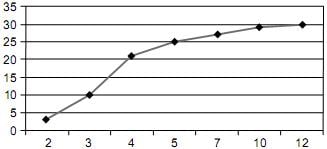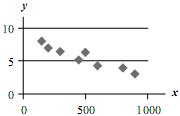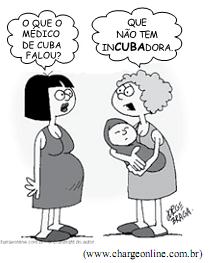Questões de Concurso
Comentadas para agente técnico - estatístico
Foram encontradas 21 questões
Resolva questões gratuitamente!
Junte-se a mais de 4 milhões de concurseiros!
1. Global warming is an increase in earth’s temperature. 2. Renewable energy is a natural and unlimited source of power. 3. Climate change is severe climate events such as tornados. 4. Ozone layer is a kind of wind power.
Choose the alternative which contains the correct afirmative:
1. Global warming is an increase in earth’s temperature. 2. Renewable energy is a natural and unlimited source of power. 3. Climate change is severe climate events such as tornados. 4. Ozone layer is a kind of wind power.
Choose the alternative which contains the correct affirmative:
Today, it seems that no one is uninformed about the environment. Every day the media shows us more evidence of climate change: extreme weather, melting ice-caps, and rising seas. Most of us believe we can do something to prevent global disaster, such as recycling, or conserving energy. It’s strange to recall that, before the 1960s, few people knew of the damagewe were doing to the planet. However, one scientist had already realized the dangers ahead. And today, this same man believes it may be too late to save the world. In the 1960s, Professor James Lovelock came up with one of the most famous theories on the environment – the GAIA hypothesis. According to this hypothesis, the earth’s atmosphere, soil, and oceans work in concert to provide an inhabitable environment for humans. If we disrupt these elements too severely, the earth may one day become uninhabitable. In the decade before he developed the Gaia hypothesis, Lovelock had created a device to detect atmospheric chemicals. With this device, he discovered particular chemicals, called CFCs. Later, other scientists discovered that these CFCs had damaged the earth’s ozone layer. Before then, we hadn’t knows about the hole in the ozone layer. By 1979, Lovelock had put forward his theories on the environment, in his first book. At that time, few people believe him. Before scientists such as Lovelock publicized environmental issues, the environment hadn’t been a very fashionable topic. In 2004, after many people had only just started to accept the reality of global warming, Lovelock became convinced that climate change was irreversible. In 2006, he wrote another book describing his latest ideas. In 40 years, Lovelock believes large parts of the world will be desert. We will need to make synthesized food to feed the world’s population. ‘Is Lovelock right this time too? Surely we can prevent this nightmare, if we all recycle, use renewable energy, and travel less by plane and car? Lovelock disagrees. According to him, it is now impossible to reverse global warming. We did not act quickly enough when we had the chance. Renewable energy and recycling are a case of too little, too late. Ultimately, if the human race is to survive, Lovelock believes we need to use more technology, not less. In his view, only nuclear energy can provide sufficient power for the planet. Now over 90 years old, Lovelock may not live to find out if he is right. But we will...
About Professor James Lovelock, it is correct to state that:
Today, it seems that no one is uninformed about the environment. Every day the media shows us more evidence of climate change: extreme weather, melting ice-caps, and rising seas. Most of us believe we can do something to prevent global disaster, such as recycling, or conserving energy. It’s strange to recall that, before the 1960s, few people knew of the damagewe were doing to the planet. However, one scientist had already realized the dangers ahead. And today, this same man believes it may be too late to save the world. In the 1960s, Professor James Lovelock came up with one of the most famous theories on the environment – the GAIA hypothesis. According to this hypothesis, the earth’s atmosphere, soil, and oceans work in concert to provide an inhabitable environment for humans. If we disrupt these elements too severely, the earth may one day become uninhabitable. In the decade before he developed the Gaia hypothesis, Lovelock had created a device to detect atmospheric chemicals. With this device, he discovered particular chemicals, called CFCs. Later, other scientists discovered that these CFCs had damaged the earth’s ozone layer. Before then, we hadn’t knows about the hole in the ozone layer. By 1979, Lovelock had put forward his theories on the environment, in his first book. At that time, few people believe him. Before scientists such as Lovelock publicized environmental issues, the environment hadn’t been a very fashionable topic. In 2004, after many people had only just started to accept the reality of global warming, Lovelock became convinced that climate change was irreversible. In 2006, he wrote another book describing his latest ideas. In 40 years, Lovelock believes large parts of the world will be desert. We will need to make synthesized food to feed the world’s population. ‘Is Lovelock right this time too? Surely we can prevent this nightmare, if we all recycle, use renewable energy, and travel less by plane and car? Lovelock disagrees. According to him, it is now impossible to reverse global warming. We did not act quickly enough when we had the chance. Renewable energy and recycling are a case of too little, too late. Ultimately, if the human race is to survive, Lovelock believes we need to use more technology, not less. In his view, only nuclear energy can provide sufficient power for the planet. Now over 90 years old, Lovelock may not live to find out if he is right. But we will...
Choose the correct alternative according to the text.
Professor James Lovelock thinks...
“By 1979, Lovelock had put forward his theories on the environment, in his first book.”
The word “his” is used twice. In both cases it refers to:
( ) Many people thought about the environment before the 1960s. ( ) Most scientists knew about global warming in the 1960s. ( ) Professor Lovelock found chemicals called CFCs in the atmosphere. ( ) Lovelock wrote a book in 2006.
Choose the alternative that presents the correct order from top to bottom:
 dos dados analisados e, no eixo vertical, os valores
dos dados analisados e, no eixo vertical, os valores  da frequência acumulada.
da frequência acumulada.
Por esse gráfico, é correto afirmar que

O gráfico apresentado resulta de uma pesquisa com trabalhadores da construção civil de uma localidade onde a variável x representa o número de horas de treinamento em previsão de acidentes, e a variável y representa o número de ocorrências de acidentes de trabalho. Supondo-se que há correlação linear entre as variáveis x e y, e considerando-se o coeficiente r de correlação entre as variáveis e o coeficiente b de inclinação da reta de regressão y = a + bx, é correto afirmar que
Tinha uma pedras no meio do caminho.
E dois cachoros ao lado da pedra.
Assinale a alternativa correta em relação aos recursos de verificação ortográfica e gramatical do MS-Word 2010 aplicados aos trechos “uma pedras” e “cachoros”.
Nada contra a vinda dos estrangeiros, desde que estejam aptos para o trabalho. Tenho dúvidas, porém, se três semanas de treinamento, como aventou o ministro, é tempo suficiente para isso.
Mantendo-se os sentidos originais, ele está corretamente reescrito de acordo com a norma-padrão em:

Na charge, o efeito de humor decorre de

